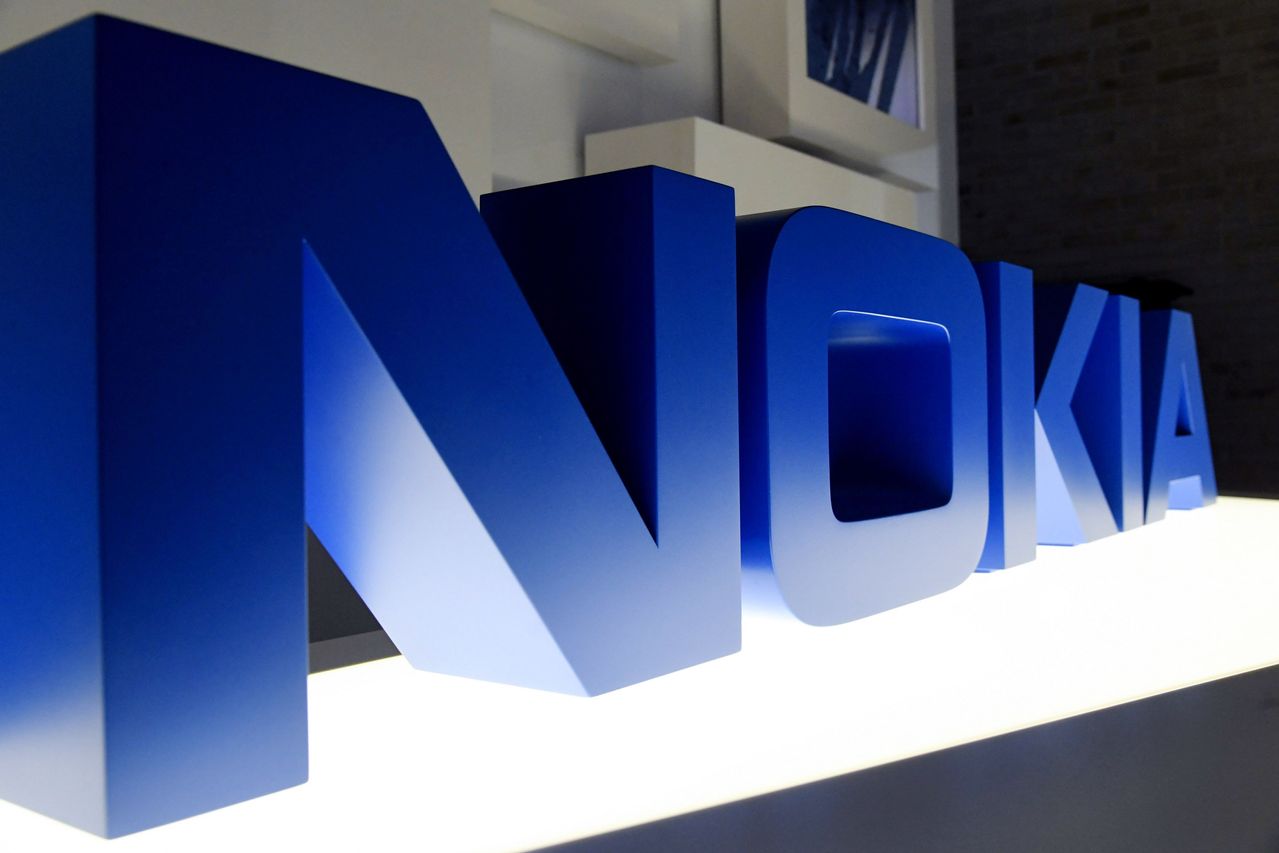Nokia Is Cutting Up To 10,000 Jobs to Boost 5G Investment
The stock, which has been a favourite among retail investors in recent months.
Nokia has unveiled plans to axe up to 10,000 jobs as part of a €600 million cost-cutting program aimed at boosting investment in 5G.
The telecom-equipment maker said resetting its cost base would allow it to invest in research and development and long-term growth areas, including 5G, cloud technologies and digital infrastructure.
The stock, which has been a favourite among retail investors and Reddit users in recent months, edged 0.5% higher in premarket trading, while the Finnish-listed shares rose 0.6% on Tuesday.
The company said it expects to lower its cost base by around €600 million by the end of 2023. As part of the restructuring, Nokia said its global workforce would be reduced from 90,000 to between 80,000 and 85,000 employees over the next two years. The company maintained its 2021 outlook.
The U.S.-listed shares are up 10% year-to-date but that doesn’t tell the whole story. The shares climbed 55% in the space of three days at the end of January, prompting the company to release a statement saying it could not explain the rally. The stock has since retreated 52%.
Aside from the volatility, Nokia’s fourth-quarter earnings were stronger-than-expected, driven by 5G margin expansion. Nokia and its Nordic rival Ericsson have benefited from a number of western countries banning China’s Huawei from 5G networks on national security grounds.
However, the Finnish company said its rate of converting its 4G footprint into 5G in 2020 was affected by shortfalls in China and North America. It also lost out to Samsung on a $6.6 billion deal with Verizon. Revenue is expected to fall for a second consecutive year in 2021, Nokia said, citing market share loss and price erosion in North America.
Looking ahead. When Chief Executive Pekka Lundmark, who took charge in August last year, unveiled a new strategy in October, he promised to do “whatever it takes” to lead in 5G. The company’s restructuring plan is evidence of that. After falling behind, Nokia needs to start picking up market share to challenge the likes of Ericsson and Huawei.
Nokia’s capital markets day on Thursday will be the next major event for investors to closely monitor, as Lundmark sets out his long-term strategy and financial outlook. JPMorgan Cazenove analysts said Nokia was likely to come across as confident of turnaround potential. But they said the company was unlikely to “raise the bar significantly” with mid-to-long-term guidance, leaving upside potential if the turnaround proceeds better than expectations.
They rated the stock ‘neutral’ with a target price of $4.30. “We see no reason to turn bullish ahead of the day as we think the turnaround is going to take time,” they said.
Lundmark’s words again were clear on Tuesday as he said “in those areas where we choose to compete, we will play to win.” Words are one thing, it’s now time for action.
 Copyright 2020, Dow Jones & Company, Inc. All Rights Reserved Worldwide. LEARN MORE
Copyright 2020, Dow Jones & Company, Inc. All Rights Reserved Worldwide. LEARN MORE
This stylish family home combines a classic palette and finishes with a flexible floorplan
Just 55 minutes from Sydney, make this your creative getaway located in the majestic Hawkesbury region.
A new report on the impact of cost of living pressures reveals a stark contrast between age groups in investment strategies
Four in five Australians say they have changed their investment and savings goals over the past 12 months, with 44 percent doing so primarily to make ends meet during the cost–of–living crisis. A further 25 percent say they’ve switched strategies to protect their wealth against inflation, according to a new survey by financial advisory firm, Findex.
The Superannuation and Retirement Insights report shows Australians have also changed their goals to grow their wealth (31 percent), to create a regular income stream (29 percent) and to reduce taxes (17 percent). Transferring wealth to their children or other family members has motivated 10 percent of Australians to alter their investment plans, which is likely reflective of the increasing role played by the Bank of Mum and Dad in young people’s first home purchases.
The report found that traditional investment avenues, such as property and superannuation, remain the most popular choices, with more than eight out of 10 survey respondents ranking these asset classes highly. But there is also an increasing inclination towards investments that offer the potential for quicker returns, additional perceived safety, and better liquidity or accessibility to funds.
Eighty percent of survey respondents also nominated bank savings as among their top five investment choices right now, followed by shares (66 percent) and cash (51 percent).
“This shift reflects a broader strategy to mitigate current financial uncertainties, balancing the pursuit of long-term wealth accumulation with the need for immediate financial security,” the report says.
While superannuation is considered a cornerstone investment for retirement and long-term wealth accumulation, 85 percent of Australians are exploring investments outside superannuation. The most common investments outside super are bank savings (64 percent), property (38 percent), cash (35 percent) and shares (34 percent).
However, when the data is broken down by generation, stark differences are revealed in how each age cohort chooses to invest their spare income and why.
Most popular investments outsider super and the motivations to invest by generation
Baby Boomers (born 1965-1964)
Outside superannuation, Baby Boomers prefer to invest in bank savings (60 percent), property (50 percent) and shares (46 percent).
By far, their primary motivation for investing is planning for retirement (80 percent). They also want to build wealth (51 percent) and support their children or other family members (25 percent). Other motivations include preserving wealth to beat inflation (22 percent) and paying off a mortgage or other debt (20 percent). They are the least likely generation to be saving for an investment property.
Gen Xers (born 1965–1980)
Gex Xers prefer to invest in bank savings (57 percent), property (43 percent) and shares (36 percent).
They are motivated to invest for retirement (66 percent), to build wealth (50 percent), to save for emergencies (36 percent), and to pay off a mortgage or other debt (30 percent). Interestingly, Gen X is the generation most concerned with supporting their children or family members (33 percent). This may be because Gen Xers have grown up during Australia’s long-standing property boom that began in the late 1990s and continues today.
Millennials (born 1981-1996)
Millennials have the strongest interest in bank savings as an investment avenue (70 percent), followed by property at 41 percent. They also like cash (35 percent) and shares (33 percent). Millennials have the highest uptake of exchange-traded funds (ETFs) at 21 percent. ETFs are a relatively new type of asset class, with the first ones trading on the ASX in 2001. ETFs are a basket of shares that can be purchased in a single transaction for instant diversification. Millennials are also the generation most interested in cryptocurrencies, with 22 percent invested.
Their biggest motivations for investing are to build wealth (55 percent), save for emergencies (50 percent) and plan for retirement (49 percent). They also want to support their kids (32 percent) and pay off their mortgage (32 percent). Millennials are the generation most likely to be saving for an investment property (28 percent) rather than a first home (17 percent).
Gen Zs (born 1997-2009)
Gen Zs spread their money across more asset classes than their elders. They like investing in bank savings (66 percent), cash (42 percent), shares (22 percent), ETFs (17 percent), property (14 percent) and cryptocurrencies (13 percent).
While Gen Zs are the youngest age cohort within the survey, they also have long-term goals just like their elders. The biggest motivation to invest among Gen Zs is to build wealth (52 percent). More Gen Zs are saving for a first home than any other generation, with 42 percent pursuing this goal. They are also the generation most concerned with preserving wealth to beat inflation (29 percent). Gen Zs also want short-term security, with 46 percent saving for emergencies. They’re also the generation most likely to be saving for other major purchases like a car or holiday (41 percent) and investing just for enjoyment (26 percent).
This stylish family home combines a classic palette and finishes with a flexible floorplan
Just 55 minutes from Sydney, make this your creative getaway located in the majestic Hawkesbury region.






















